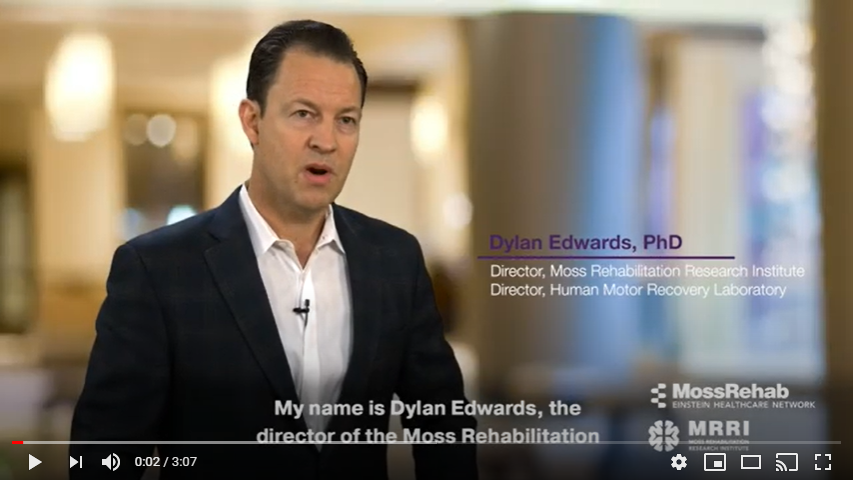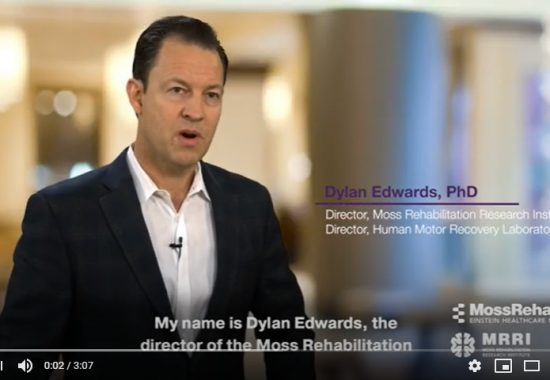
Understanding the impairments in motor function that humans with neurological damage experience following a brain injury or spinal cord injury could give scientists insight into opportunities to improve conventional rehabilitation treatment options and help develop more informed rehabilitation treatment strategies.
At the Human Motor Recovery Laboratory, researchers use contemporary techniques including non-invasive brain stimulation, neuroimaging, kinematics, and virtual reality, along with conventional rehabilitation therapies, to study and promote the motor recovery process.
Led by Director of MRRI Dylan Edwards, PhD, the laboratory is dedicated to finding the right combination of approaches to optimize the motor recovery process, while making it a more engaging and enjoyable experience for patients.
In this video, Dr. Edwards describes the different motor function restoration strategies used at the Human Motor Recovery Laboratory in its mission to make a difference in patients’ lives.


2 comment on “Combining Conventional and Innovative Rehab Techniques at the Human Motor Recovery Laboratory”